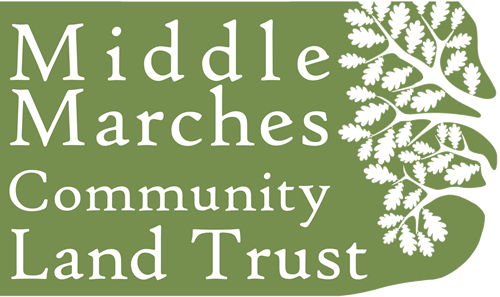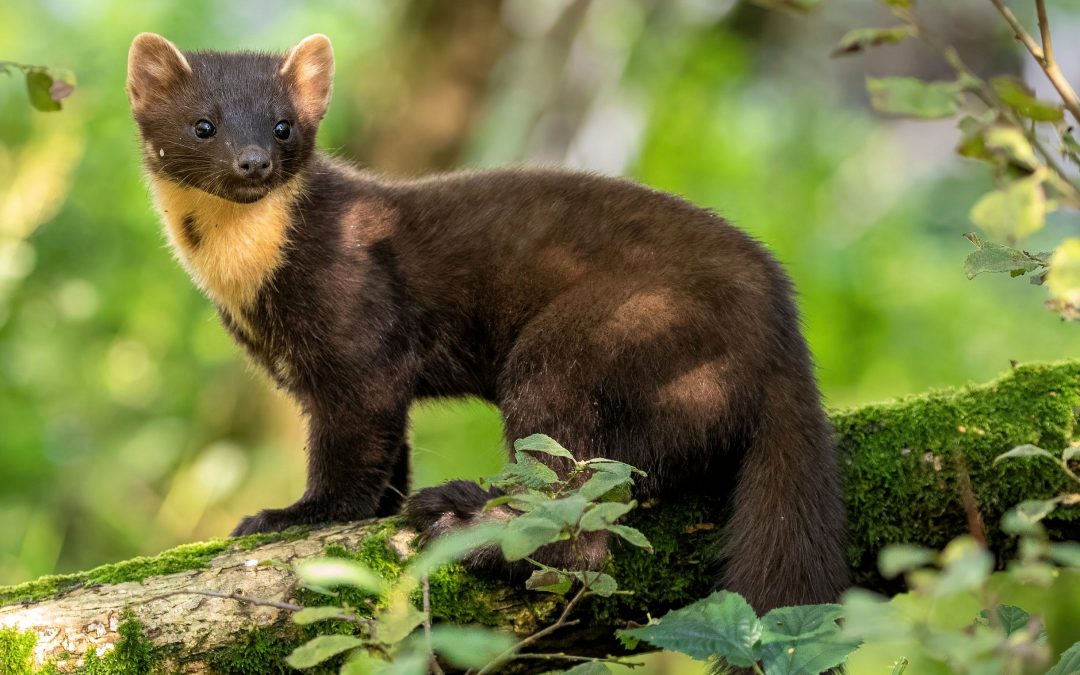Pine martens – England’s rarest mammals – were thought to be extinct in Shropshire since 1893, but then showed up on remote camera traps in 2015. In order to make sure they aren’t lost again, Shropshire Pine Marten Project in collaboration with Shropshire Mammal Group, other conservation organisations (Shropshire Wildlife Trust and The National Trust) and landowners, has been monitoring woodlands with camera traps to find out where pine martens are living and breeding.
Camera traps are a key tool in monitoring shy animals…we wouldn’t even know that there were pine martens here without them. Funds are always needed to buy additional camera traps and maintain them. By discovering if a woodland has pine martens living in it, we can then work to protect the woodland and adapt how it is managed for the benefit of martens. Healthy woodlands with pine martens are also great for a variety of other wildlife, including goshawk, dormice and pied flycatchers. And they are great for people to enjoy too.
Den boxes offer pine martens safe places to rest up in trees and offer an alternative to the tree hollows that they usually sleep in. More places for pine martens to safely rest could increase their chances of breeding and rearing young.
Why are funds needed?
Monitoring wildlife is often labour intensive and depends on the help of volunteers. Project budget covers the cost of running training events and room hire for talks to allow more people to get involved.
The purchase and installation of den boxes could provide an essential helping hand to pine martens in Shropshire. Our aim is to purchase and install at least 25 new den boxes in 2024. Each box costs £110 and takes around 1 hour to install at a height of 4m in suitable trees.
Funding is also needed to cover the costs of:
Camera traps and maintenance: camera traps have a limited lifespan and our cameras are in need of a desperate upgrade. Each camera trap (Brownings) costs around £160 to purchase and £24 per year to power.
Lures: An essential tool in attracting pine martens to an area monitored by camera trap, lures are purchased from Germany and greatly increase the chances of recording pine marten activity.
Conservation Sniffer Dogs: Deploying camera traps randomly in forests proved unsuccessful, but with the help of a trained sniffer dog for £300 per session, we can narrow down the search area and even determine if there are no martens living in an area. This helps to decide where camera traps and later, den boxes, can be installed.
Why should this be funded?
Wildlife in the UK desperately needs our help, but it is much easier to protect and manage important wildlife areas if we know more about the animals that live in them. The monitoring of pine martens through the use of camera traps also helps collect data on a huge variety of species.
Who will run the project?
Monitoring will be coordinated by Stuart Edmunds, Chair of Shropshire Mammal Group and Shropshire Pine Marten Project founder, along with the support of volunteers and Shropshire Mammal Group members.
To donate to this project, please visit Stuart’s crowdfunding page


